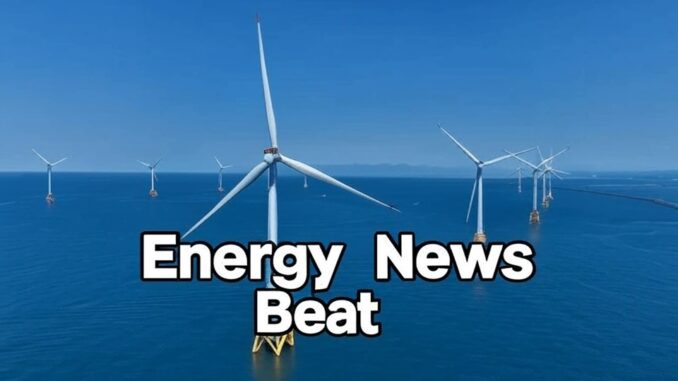
In a significant blow to the U.S. offshore wind sector, JERA Nex BP—a joint venture between Japan’s largest power generator JERA and British energy giant BP—has announced plans to halt development of the Beacon Wind project. The decision, revealed on October 22, 2025, comes amid escalating costs and an increasingly hostile political environment under President Donald Trump, who has aggressively targeted offshore wind initiatives. The venture will lay off its U.S. employees in the coming months but intends to retain the lease rights for the project, leaving open the possibility of revival under more favorable conditions.
This move underscores the broader challenges facing renewable energy projects in the U.S., where economic pressures and policy shifts are derailing ambitious clean energy goals.
Details of the Beacon Wind Project
The Beacon Wind project, located off the coast of Massachusetts, was envisioned as a major contributor to the Northeast’s renewable energy supply. With a potential generating capacity of 2.6 gigawatts (GW), it could power more than 1 million homes once operational.
The project spans a lease area previously co-owned by Equinor and BP, but BP assumed full ownership in early 2024 as part of a restructuring deal where it swapped interests in the Empire Wind project with Equinor.
In December 2024, BP spun off its offshore wind assets into the newly formed JERA Nex BP joint venture, headquartered in London. This partnership combined operating assets and development projects across multiple countries, including the U.S., with a net potential capacity of 13 GW at launch.
For Beacon Wind, the JV aimed to develop it in phases, building on prior efforts by Equinor and BP. However, progress has been hampered by regulatory hurdles and economic factors, leading to the current suspension of activities.
Reasons for Cost Overruns and Project Evaluations
The halt is primarily attributed to “soaring costs” driven by supply chain disruptions, rampant inflation, and broader industry headwinds.
Historically, the Beacon Wind project has faced significant financial pressures. As far back as 2023, when it was under Equinor-BP ownership, the partners sought a 54% increase in the power purchase agreement strike price—from $118/MWh to $190.82/MWh—citing inflation and global supply chain issues.
Industry-wide, offshore wind costs have risen sharply; for instance, similar projects have reported increases of up to 57% since initial approvals, far exceeding original projections.
Evaluations by JERA Nex BP concluded there is “no viable path” forward in the current environment, prompting the closure of U.S. operations.
This assessment factors in not just economic challenges but also political opposition. President Trump’s administration has issued stop-work orders, initiated permit reviews, and canceled over $679 million in Department of Transportation financing for ports supporting offshore wind, including facilities in Massachusetts critical to projects like Beacon.
Trump has repeatedly criticized offshore wind as “unsightly, inefficient, and harmful to whales and birds,” prioritizing oil and gas revival over renewables.
Role of Inflation Reduction Act Subsidies and Project Viability
The decision to halt Beacon Wind has raised questions about the project’s dependence on federal subsidies, particularly those under the Inflation Reduction Act (IRA) of 2022, which provides tax credits and incentives for renewable energy development. While the article announcing the halt does not explicitly cite a loss of IRA subsidies as the direct cause, the broader policy shifts under Trump have eroded government support for offshore wind.
The IRA remains intact, but related funding streams—such as port grants—have been axed, indirectly impacting project economics. Offshore wind projects like Beacon are generally not viable without subsidies. Analysts note that the sector relies heavily on taxpayer and ratepayer support to offset high upfront costs, which can make electricity rates rise significantly.
Even with IRA incentives, recent cost overruns have pushed many developments into unprofitability, leading to cancellations or renegotiations.
Prior to these overruns, Beacon Wind might have stood on firmer ground with subsidies in place; initial projections under Equinor-BP assumed strike prices that incorporated federal support, making it marginally competitive in a subsidized market.
However, without subsidies and before accounting for overruns, the project would likely have been uneconomical, as offshore wind’s levelized costs often exceed those of onshore alternatives or fossil fuels without policy backing.
BP’s Recent Earnings and Future Projections
This development comes as BP navigates a mixed financial landscape, with a renewed focus on high-return oil and gas amid retreats from renewables. In its last reported quarter (Q2 2025), BP delivered underlying replacement cost profit of $2.35 billion, surpassing analyst expectations of around $1.8 billion. Earnings per American Depositary Share (ADS) came in at $0.90, down from $1.00 year-over-year but still a beat. Revenues totaled $47.7 billion, a slight decline from $48.3 billion in Q2 2024.
This followed a weaker Q1 2025, where underlying profit was $1.4 billion, reported profit $0.7 billion, and revenues $46.5 billion.
Looking ahead, BP’s Q3 2025 earnings report, scheduled for November 4, 2025, is expected to show EPS of approximately $0.77, reflecting ongoing pressures from volatile oil prices but supported by resilient refining margins.
For Q4 2025, projections indicate potential growth, with some estimates suggesting a 31.8% quarter-over-quarter increase in EPS, driven by seasonal demand and operational efficiencies.
Full-year 2025 consensus forecasts point to EPS around $2.74 to $4.10 (varying by source, likely due to share vs. ADS differences), with revenues projected at $179.5 billion—a modest increase reflecting expected recovery in energy markets.
|
Quarter
|
Underlying Profit ($B)
|
EPS ($)
|
Revenues ($B)
|
Key Notes
|
|---|---|---|---|---|
|
Q1 2025
|
1.4
|
~0.25 (est.)
|
46.5
|
Weaker oil prices impacted results.
|
|
Q2 2025
|
2.35
|
0.90
|
47.7
|
Beat expectations; focus on oil/gas.
|
|
Q3 2025 (Expected)
|
N/A
|
0.77
|
N/A
|
Volatile markets; report due Nov 4.
|
|
Q4 2025 (Projected)
|
N/A
|
~1.00 (est.)
|
N/A
|
Potential growth from demand recovery.
|
|
Full Year 2025 (Consensus)
|
N/A
|
2.74-4.10
|
179.5
|
Modest growth amid energy transition shifts.
|
BP’s pivot away from offshore wind, exemplified by the Beacon halt, aligns with its strategy to prioritize profitable fossil fuel segments while monitoring renewables for future opportunities. As the energy landscape evolves, the fate of projects like Beacon Wind will depend on stabilizing costs and shifting political winds.
Got Questions on investing in oil and gas? Or do you have a Tax Burden in 2025?
Crude Oil, LNG, Jet Fuel price quote
ENB Top News
ENB
Energy Dashboard
ENB Podcast
ENB Substack






Be the first to comment